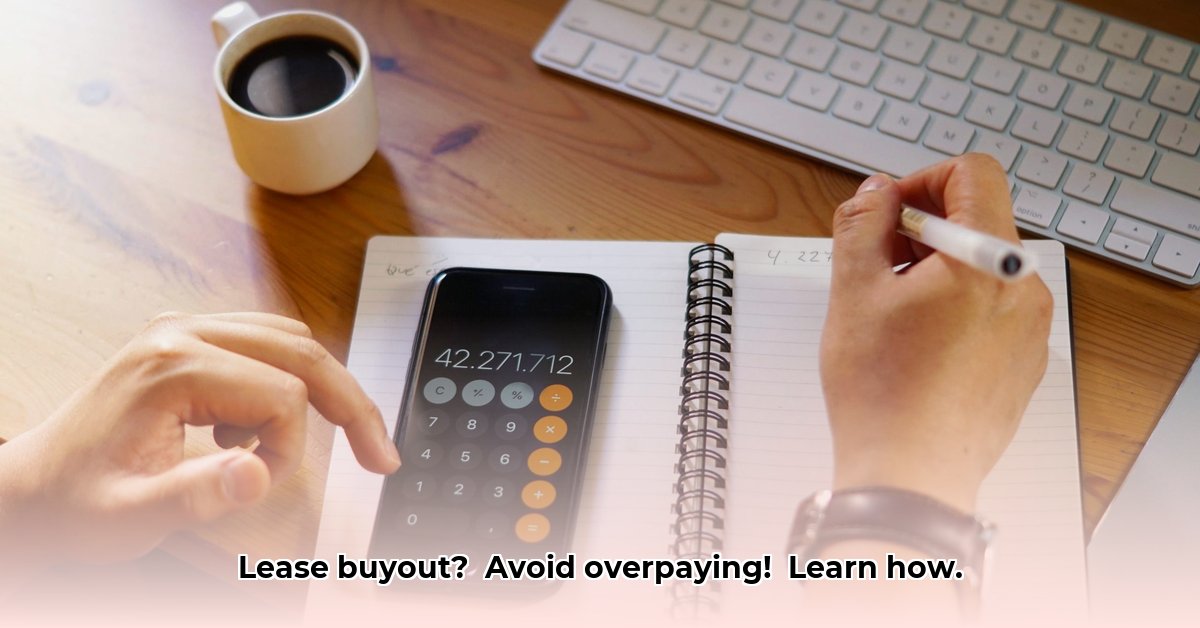
Understanding Lease Buyouts: A Quick Overview
Thinking about buying out your car lease? This comprehensive guide provides a step-by-step process to help you calculate the buyout cost accurately and avoid overpaying. We'll break down the jargon, explore your options, and help you make an informed decision. Are you ready to take control of your finances and potentially own your vehicle outright?
Decoding Key Terms: Residual Value vs. Market Value
Before we dive into calculations, let's understand two crucial terms:
Residual Value: This is the pre-determined value of your vehicle at the end of the lease term, as specified in your contract. It's the leasing company's estimate of the car's future worth.
Market Value: This represents your vehicle's current worth in the used car market. It fluctuates based on factors like make, model, year, mileage, condition, and overall market demand. Websites like Kelley Blue Book and Edmunds provide estimates, but getting quotes from local dealerships is also recommended for a comprehensive picture.
The difference between these two values significantly impacts the financial viability of a lease buyout. A large gap could mean a good deal.
Step-by-Step Lease Buyout Calculation: A Practical Guide
Let's calculate your buyout cost with these clear steps:
Find Your Residual Value: Check your lease agreement; this number is often prominently displayed.
Determine Market Value: Use online resources (Kelley Blue Book, Edmunds) and obtain quotes from multiple dealerships. Remember, market value fluctuates. Multiple appraisals help build a more realistic range.
Identify Early Termination Penalties: Your lease contract might contain penalties for early buyout. Factor these charges into your calculations. These amounts will vary.
Account for Fees and Taxes: Include sales tax, title transfer fees, and any additional lease-end fees charged by the leasing company. Your state's Department of Motor Vehicles (DMV) website can provide guidance on state-specific taxes.
Calculate Total Buyout Cost: Add your residual value, early termination penalties (if applicable), and all fees and taxes. This sum is your total buyout cost.
Example: If your residual value is $18,000, your early termination penalty is $750, and taxes/fees total $1,250, your total buyout cost is $20,000.
Financing Your Buyout: Exploring Your Options
Once you've determined your buyout cost, consider your financing options.
Cash Payment: If you have the funds readily available, a cash payment is the simplest method.
Auto Loan: Compare interest rates and loan terms from various banks, credit unions, and online lenders. A higher credit score generally results in lower interest rates. Consider getting pre-approved for a loan before approaching the leasing company, and compare interest rates and repayment terms carefully. This preparedness can strengthen your negotiating position.
Weighing Your Decision: Pros and Cons of a Lease Buyout
Before proceeding, evaluate these points:
Pros:
- Ownership: You own the vehicle outright.
- No More Lease Payments: Enjoy the freedom from monthly lease payments.
- Equity Building: You start building equity in your asset.
Cons:
- Higher Total Cost: The total cost might exceed simply trading in or selling the vehicle.
- Market Value Fluctuation: The car's value can drop after the buyout.
- Repair & Maintenance: You're fully responsible for repairs and maintenance.
The used car market is dynamic. A high market value relative to the residual value might make a buyout attractive, but the market's volatility poses a risk. Dr. Anya Sharma, Professor of Finance at the University of California, Berkeley, cautions, "The used car market is unpredictable. Always consider the potential for market decline before committing to a buyout."
Minimizing Risks: Protecting Your Investment
Take these precautions:
Pre-Buyout Inspection: Have a trusted mechanic inspect the vehicle to identify potential issues and avoid costly surprises. This proactive step can save you significantly in the long run.
Verify Market Value: Don’t rely on a single source. Get multiple estimates for a more accurate picture.
Secure Favorable Financing: Shop around for auto loans to secure the most favorable interest rate and terms.
Review Your Lease Agreement: Thoroughly review your contract to ensure all fees and penalties are accounted for. Failing to carefully read your contract before agreeing to a buyout can be very costly.
Making the Smart Decision: Your Next Steps
Calculating a lease buyout requires a careful evaluation of various factors. This guide provides a framework for making an informed decision. However, seeking professional advice from a financial advisor is recommended to tailor the decision to your specific circumstances and financial goals. Remember, making a sound financial decision is key to long-term financial health.